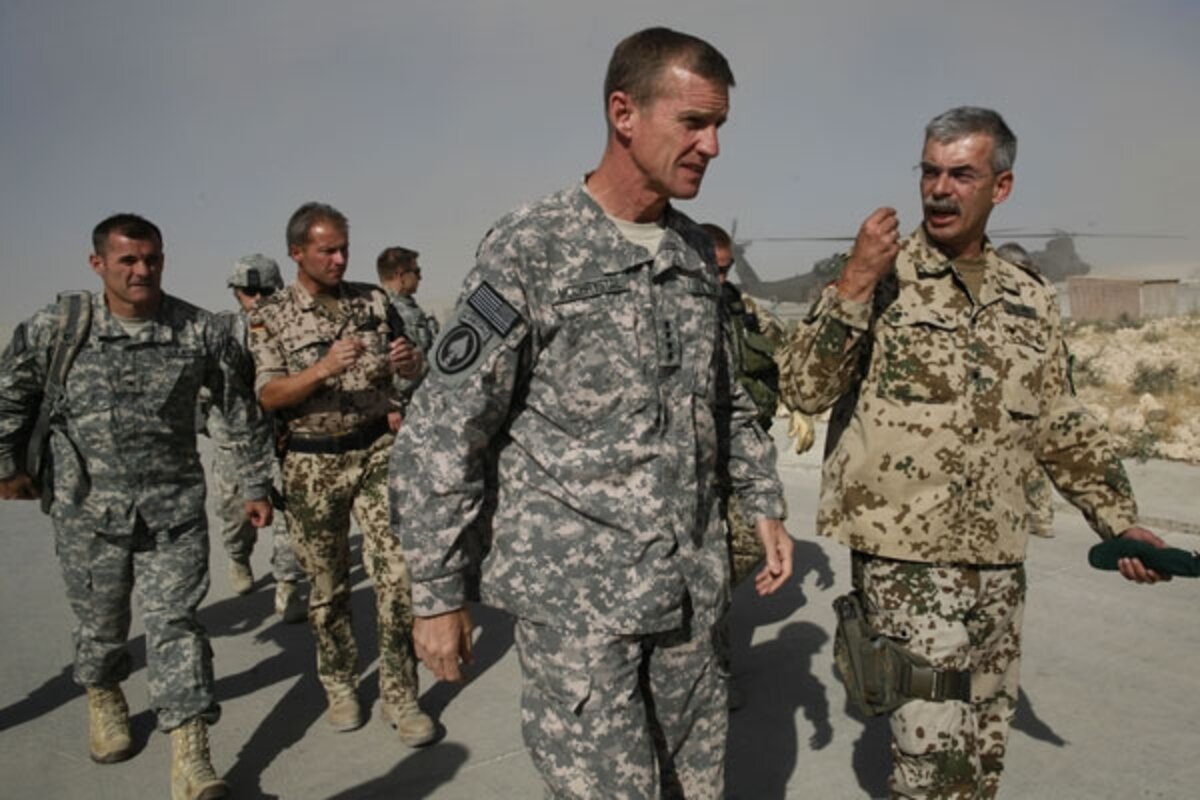Obama faces critical decision on how to proceed in Afghanistan
Loading...
The United States -- and in particular the Obama administration -- is at a critical point in deciding how to proceed with the eight-year war in Afghanistan.
Public opinion polls show waning support for the war, generally tied to two things: Evidence of corruption in Afghanistan’s recent election, and especially American military casualties there. Five more US troops were killed on Thursday and Friday, bringing total casualties to 36 this month and 218 for the year.
Meanwhile, senior military officials are pondering Gen. Stanley McChrystal’s expected request for an additional 40,000 troops, which would bring the total number of US troops there to about 105,000. (In addition, some 38,000 allied troops are in the country.)
General McChrystal, the top American commander in Afghanistan, met in Germany Friday with Joint Chiefs of Staff Adm. Mike Mullen and other senior officers including Gen. David H. Petraeus, chief of U.S. Central Command, and Adm. James Stavridis, the supreme allied commander for NATO.
McChrystal’s troop request was to be presented to the White House this weekend.
Meanwhile, senior administration officials and advisers reportedly are divided on how to proceed with the war, :
“As President Obama weighs sending more troops to Afghanistan, one of the most consequential decisions of his presidency, he has discovered that the military is not monolithic in support of the plan and that some of the civilian advisers he respects most have deep reservations.”
At the same time, opinion polls this week show increased public wariness about the war.
“Asked how they feel about 'sending additional U.S. troops' into the conflict, exactly half of Americans -- 50 percent -- say they oppose the idea, while 41 percent support it,” according to an analysis of a released Monday.
A found the same thing: “Americans are more likely to say they would oppose (50 percent) rather than favor (41 percent) a possible decision by President Barack Obama to send more U.S. troops to Afghanistan.”
“The Afghanistan situation creates an unusual set of political cross-currents,” writes Gallup’s Frank Newport in an analysis of his organization’s findings. “A Republican president (George W. Bush) initiated the movement of U.S. troops to Afghanistan in 2001, and Republicans in general have been more supportive than Democrats of the Afghanistan war. If Obama does make a decision to send more troops, Republicans would be faced with the prospect of supporting a Democratic president's decision to initiate a policy they favor, while Democrats who oppose further escalation in Afghanistan would be faced with going against a president representing their own party.”
Barely more than two months ago -- in mid-July -- most Americans (54 percent) agreeing that “things are going well for the U.S. in Afghanistan.”
In a piece to be published in , seven foreign policy experts are asked “whether President Obama should maintain a focus on protecting the population and rebuilding the country, or on striking terrorists.”
There are no simple or unified answers.
John Nagl, president of the and a retired Army officer known for his expertise on counterinsurgency, writes:
“In time, a properly resourced strategy like that President Obama articulated in March can build Afghan security forces that can stand on their own, preventing Afghanistan from again being used as a haven for terrorism and stabilizing rather than weakening neighboring Pakistan. The cost will be high, but sometimes you get what you pay for.”
-----
Follow us on .




